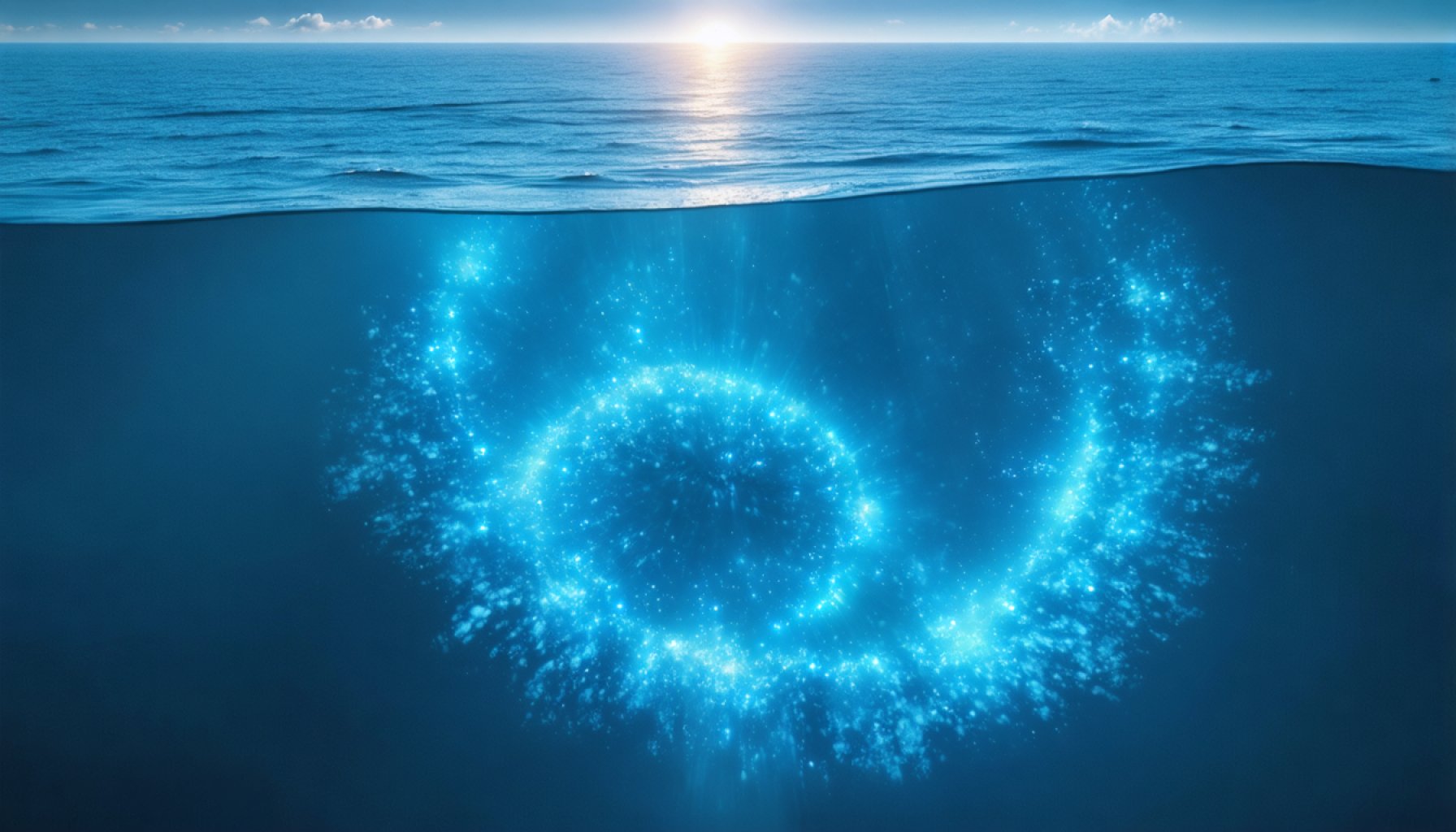- Rocket Lab’s launch from New Zealand introduces Wadatsumi-I, a cutting-edge synthetic aperture radar (SAR) satellite for enhanced Earth observation.
- The satellite, named after Japan’s ancient water deity, can capture clear imagery through clouds and at night, revolutionizing Earth imaging.
- Wadatsumi-I aims to join a planned constellation of 36 satellites, delivering near-real-time data insights every 10 minutes.
- This mission, “The Sea God Sees,” signifies a leap in technological prowess, offering invaluable data for disaster response, supply chain optimization, and environmental conservation.
- iQPS leads the ambitious project, intertwining human curiosity with machine precision to transform how we observe our planet.
Beneath the watchful skies of New Zealand, Rocket Lab prepares for a momentous launch, one that promises to deepen our understanding of this vibrant blue planet. As the sun sets over the swaying fields of Māhia Peninsula, the Electron rocket stands ready, a sleek sentinel against the twilight. Just as Japan’s ancient water deity Wadatsumi could peer through ocean depths, the satellite bearing its name is poised to gaze unwaveringly at Earth, day or night.
This isn’t just another rocket launch; it’s a portal to a new era in Earth observation. The sleek form of Wadatsumi-I, a cutting-edge synthetic aperture radar (SAR) satellite, defies limitations of light and weather. With its keen eyes, it will pierce through veils of cloud and murk of night, capturing imagery as clear and precise as a sunny morning landscape.
The craft’s journey begins with a fiery ascent from Rocket Lab’s New Zealand site, its destination a 357-mile-high orbit where it will join a burgeoning constellation designed to revolutionize data collection. This mission, named “The Sea God Sees,” is not just symbolic of its Japanese spiritual namesake; it stands a testament to technological prowess and ambition.
iQPS, the visionary force behind Wadatsumi-I, is creating a SAR network that spins a web of data, poised to enshroud the globe. Once complete, 36 satellites strong, this constellation will yield near-real-time insights every 10 minutes, scanning cities’ intricate veins and the ceaseless dance of life below. Cityscapes, agriculture, bustling highways, and even roaming herds of cattle will fall under this celestial gaze, each snapshot offering invaluable intelligence.
Such technological feats signal a paradigm shift in how we observe and interpret our world. The true marvel lies in its ability to inform disaster response, optimize supply chains, and augment environmental conservation efforts. “The Sea God Sees” mission is more than just a technical achievement; it’s an evolutionary step in our ongoing quest to merge the mythical with the digital, stitching human curiosity with machine precision.
As the countdown ticks toward launch, those gathered watch with bated breath, unified in hope that this mission will transform earthly observations, turning myth into reality once more.
A Glimpse into the Future: How Rocket Lab and iQPS’s Earth Observing Satellite Will Transform Our World
Insights into the Mission and its Potential Impact
Rocket Lab’s latest mission from the Māhia Peninsula in New Zealand introduces “The Sea God Sees,” a momentous launch featuring the Wadatsumi-I satellite. This technology embodies a significant leap forward in Earth observation capabilities by using a synthetic aperture radar (SAR) satellite capable of penetrating clouds and operating day or night, offering clear, precise images regardless of weather conditions.
Key Features of the Wadatsumi-I Satellite:
– Synthetic Aperture Radar (SAR) Technology: The SAR system used by Wadatsumi-I allows it to collect high-resolution images through cloud cover and darkness, vastly improving the reliability of data collection in various environmental conditions.
– High Orbit Location: Positioned 357 miles above Earth, the satellite joins a growing constellation aimed at redefining data collection from space.
– Data Collection and Frequency: Once complete, this 36-satellite constellation by iQPS is designed to offer near-real-time data every 10 minutes, providing critical insights for industries ranging from agriculture to urban planning.
Real-World Applications and Use Cases
Disaster Response and Management
– SAR satellites can monitor areas hit by natural disasters such as floods, hurricanes, and earthquakes, providing rapid and detailed imagery that aids in timely response and resource allocation.
Agriculture and Food Security
– By regularly monitoring agricultural lands, these satellites can assess crop health, forecast yields, and detect water stress, helping farmers make informed decisions enhancing food production efficiency.
Urban Development and Infrastructure Monitoring
– Frequent and detailed observations allow for the monitoring of urban sprawl, infrastructure development, and traffic patterns, leading to better urban planning and resource management.
Market Forecasts & Industry Trends
As we move deeper into the era of space-based Earth observation, the demand for SAR satellites is expected to rise. According to industry reports, the global SAR satellite market could exceed $5 billion by 2028, driven by advances in satellite technology and the growing need for reliable environmental data.
Reviews, Comparisons, and Insights
While traditional optical satellites provide valuable data, their limitations in adverse weather conditions make SAR satellites an increasingly attractive option. SAR technology ensures uninterrupted data collection, enhancing our ability to respond to urgent global challenges without delay.
Actionable Recommendations
– For Businesses: Companies can leverage data from SAR satellites to optimize logistics, improve strategic planning, and anticipate environmental impacts on business operations.
– For Researchers and Policymakers: Accurate, real-time data from missions like “The Sea God Sees” can drive evidence-based decision-making, fostering sustainable practices and policies.
– For Educators and Enthusiasts: Embracing this technology in educational settings can fuel interest in STEM fields, inspiring future generations to innovate further.
To stay updated on the latest developments in space technology and Earth observation, visit Rocket Lab.
In conclusion, the launch of Wadatsumi-I is a testament to human ingenuity and our pursuit of knowledge. As this technology unfolds, the potential to reshape our understanding and interaction with Earth is enormous, offering powerful tools to tackle some of the planet’s most pressing challenges.
